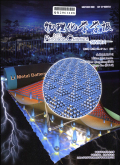物理化学学报2024,Vol.40Issue(7):7-20,14.DOI:10.3866/PKU.WHXB202305059
锂氧电池有机电解液的研究进展
Progress on Liquid Organic Electrolytes of Li-O2 Batteries
摘要
Abstract
Li-O2 batteries have garnered significant attention due to their ultrahigh theoretical energy density,comparable to that of gasoline.However,despite this promise,several challenges have hindered the commercial application of Li-O2 batteries.These challenges include poor reversibility,unsatisfactory cycling duration,and high overpotential during battery operation.The key factor behind the poor reversibility of current Li-O2 batteries is the occurrence of side reactions between various battery components and discharge products or intermediates.The electrolyte,an essential component in Li-O2 batteries,plays a crucial role in charge transport and mass transfer within the battery.Among the available electrolytes used in Li-O2 batteries,liquid organic electrolytes have been predominantly investigated as potential options.However,they suffer from insufficient chemical and electrochemical stability,which contributes to the overall poor reversibility.Substantial progress has been made in understanding the factors that lead to the degradation of liquid organic electrolytes and in enhancing their stability.However,there is still a need for more significant improvements to achieve practical performance.This review comprehensively introduces the development of liquid organic electrolytes for Li-O2 batteries,focusing on solvents,lithium salts,and additives.It outlines the specific requirements of electrolytes for Li-O2 batteries and highlights the importance of reducing charge overpotentials as a critical strategy to mitigate both electrochemical and chemical degradation.The review proceeds to detail the composition of liquid organic electrolytes,beginning with solvents.Carbonates,ethers,amides,and ionic liquids are discussed,along with their respective advantages,disadvantages,and strategies to overcome limitations.The role of lithium salts is then examined,with an emphasis on the relationship between the properties of lithium salts,such as donor number and anion polarity,and electrolyte performance.Some lithium salts are highlighted for their additional functions,such as forming stable solid electrolyte interfaces(SEI)on the anode side and reducing overpotential during charging.Additives in liquid organic electrolytes are also discussed.Redox mediators and singlet oxygen quenchers are discussed as representative additives,showcasing their significance in Li-O2 batteries.Redox mediators can influence the reaction mechanism,leading to lower overpotentials in both discharge and charge processes and increased capacity.Notably,classical redox mediators like LiI are introduced,and criteria for selecting appropriate redox mediators are outlined.On the other hand,singlet oxygen quenchers convert aggressive singlet oxygen into harmless triplet oxygen,thereby suppressing unwanted side reactions in Li-O2 batteries.The mechanism behind singlet oxygen generation is also addressed.In summary,this review aims to provide a comprehensive overview of the progress in liquid organic electrolytes for Li-O2 batteries.It highlights the need for better electrolyte design by addressing various aspects such as solvents,lithium salts,and additives.This comprehensive understanding will guide future research efforts towards developing more stable and efficient electrolytes for Li-O2 batteries,thereby advancing their practical applicability.关键词
锂氧电池/有机电解液/溶剂/锂盐/添加剂Key words
Li-O2 battery/Liquid organic electrolyte/Solvent/Li salt/Additive分类
化学引用本文复制引用
陈浩,杨冬月,黄岗,张新波..锂氧电池有机电解液的研究进展[J].物理化学学报,2024,40(7):7-20,14.基金项目
The project was supported by the National Key R&D Program of China(2020YFE0204500,2021YFF0500600),the National Natural Science Foundation of China(52171194,52271140),the CAS Project for Young Scientists in Basic Research(YSBR-058),the Youth Innovation Promotion Association of Chinese Academy of Sciences(2020230,2021223),and the Changchun Science and Technology Development Plan Funding Project(21ZY06).国家重点研发计划(2020YFE0204500,2021YFF0500600),国家自然科学基金(52171194,52271140),中国科学院稳定支持基础研究领域青年团队计划(YSBR-058),中国科学院青年创新促进会(2020230,2021223)和长春市科技发展计划(21ZY06)资助项目 (2020YFE0204500,2021YFF0500600)

